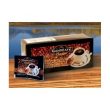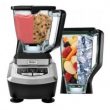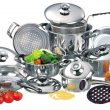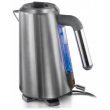Every day, you fill the water reservoir of your coffeemaker, scoop in the grounds, and push the “on” button so you can wake up with a hot cup of coffee. That’s about as much thought as most people give coffee made at home or in the office. But there’s a lot more to know about how your favorite coffee brands get their flavor.
Where does coffee come from?
Here’s a quick step-by-step explanation for how coffee travels from tree to mug.
- Seedlings
The coffee beans we see in coffeehouses and grocery stores are also the coffee tree seeds. Modern farming methods start cultivating the seeds in carefully controlled nurseries until they’ve matured enough to survive in groves.
- Blooming
It takes a few years for young trees to produce blooms that turn into fruit, which when ripe, look like cherries and are often referred to as “cherries.”
- Picking
Even with modern farming equipment, most coffee crops are still handpicked; however, there are two main approaches.
• Strip picked: The plant is “stripped” of all its fruit in one picking.
• Selectively picked: Only the ripest cherries are picked, but the crew may revisit the trees every few days to harvest the newly ripened ones.
- Processing
The cherry is encased in a hull, which has to be removed and the seed/bean dried before it can be stored. If this step is skipped, then the seed can become moldy or mildewy.
Just like picking, there are two different processing approaches.
• Dry method: This relies on the sun to do most of the work. The harvested fruit are laid out on platforms and occasionally raked and turned for even drying. Typically, the beans are covered at night to protect them from overnight moisture, and of course, in the rain.
• Wet method: This process starts by passing the cherries through a machine that removes the pulp and the remaining bean moves along water channels that help separate them by size (larger, heavier beans sink while smaller, lighter ones rise). Next, they move through rotating drums for further separation before landing in water-filled fermentation tanks. Lastly, they’re set out to dry.
- Milling
This is a three-step stage.
• Hulling: Removes the parchment or hull for wet-processed beans. Dry-method beans have the entire husk removed.
• Polishing: This is an optional step, but polished beans command higher prices.
• Grading: Coffee beans are graded based on size.
- Exporting
At this stage, the beans are called “green” coffee, and they’re ready to be shipped. According to the National Coffee Association of U.S.A. Inc., approximately 7 million tons of green coffee are shipped around the world every year.
- Roasting
Importing coffee companies usually do the roasting. This step imbibes the beans with their flavor by heating them in roasters that reach 550° Fahrenheit. Constant movement keeps the beans from burning.
- Grinding
Last, but not least, the beans are put through the grinder to create grounds that can be brewed. FYI: The finer the grind, the sooner the grounds need to be brewed.
Of course, different brands source their beans from different growing regions, and may have certain roasting secrets, but for the most part, this is how coffee gets from the tree to your mug.
Featured Brand
Seattle’s Best Ground Coffee, 12 ozThis brand started in a little coffeehouse on Pier 70 in Seattle during the 1970s. Within 20 years, it was winning local competitions and is now a nationally recognized name. Consumers can purchase it as whole beans, pre-ground or decaffeinated.
$5.38
Featured Brand
Kicking Horse Coffee Kick Ass Dark, Whole Bean Coffee, 2.2-Pound PouchNamed as Canada’s No. 1 organic Fair Trade Coffee, Kicking Horse is known for preserving the coffee-growing environments as well as providing great flavor.
$26.81
Featured Brand
Folgers Classic Roast Ground Coffee, 33.9 OzFolgers has been serving up coffee for more than 150 years. When James Folger tried his luck in the California Gold Rush, he brought along coffee samples from San Francisco to entice storeowners to carry the product, and the rest is history. Today, the brand holds more than 15 percent of the highly competitive U.S. coffee market.
$6.99










